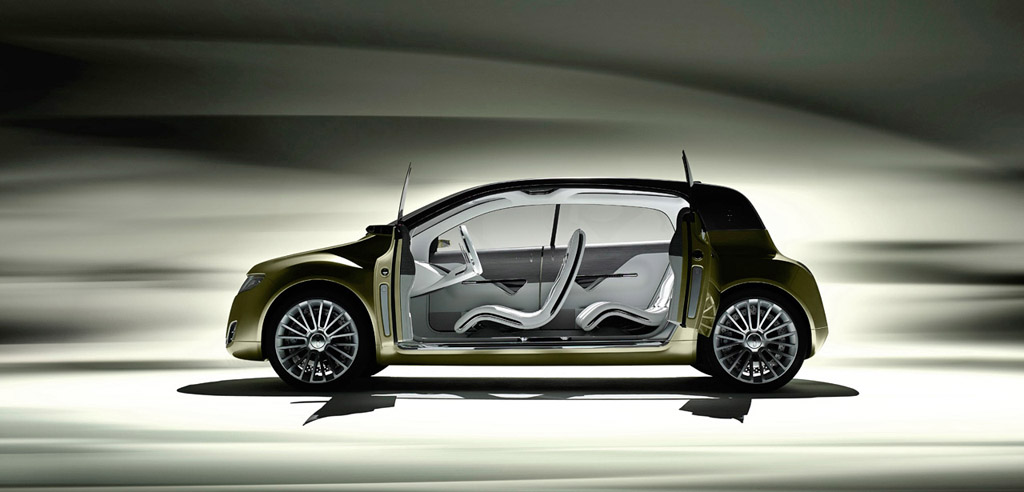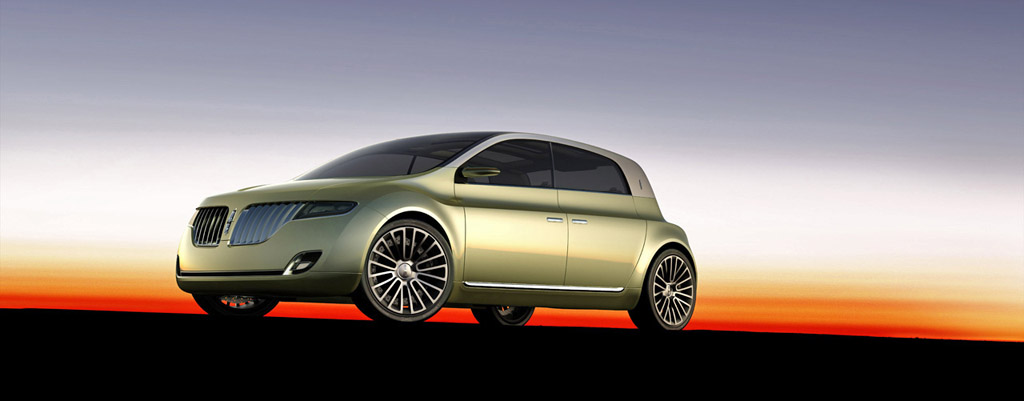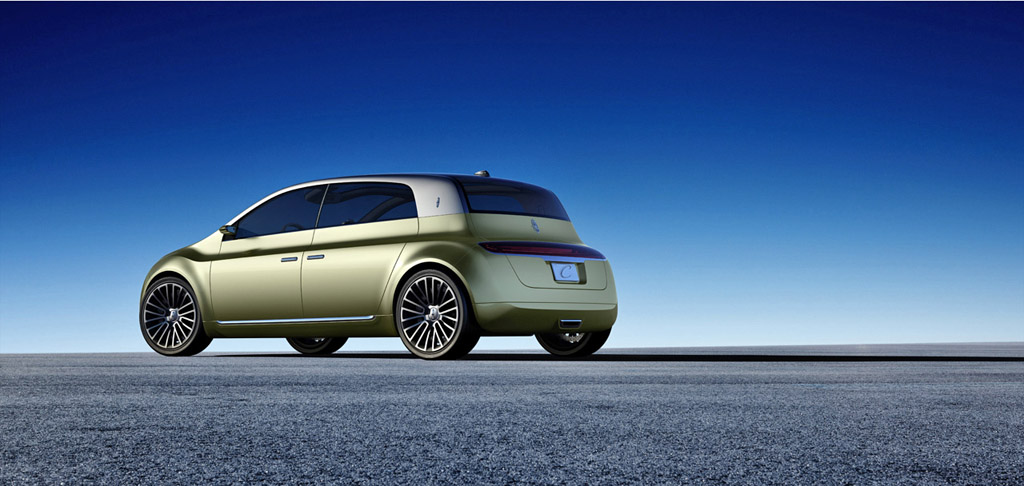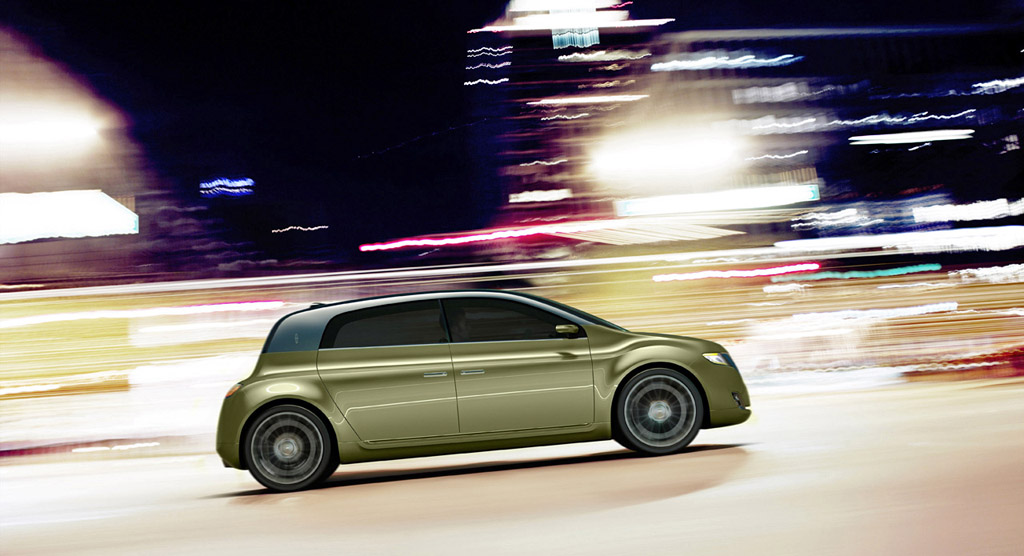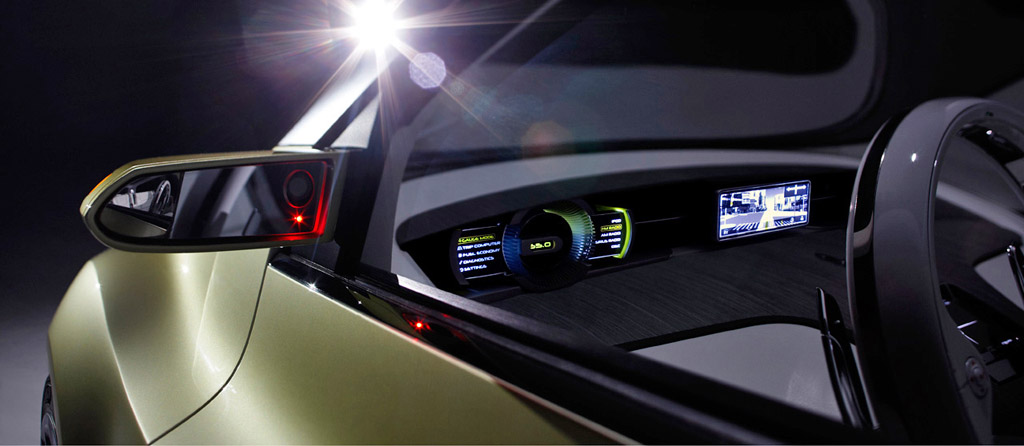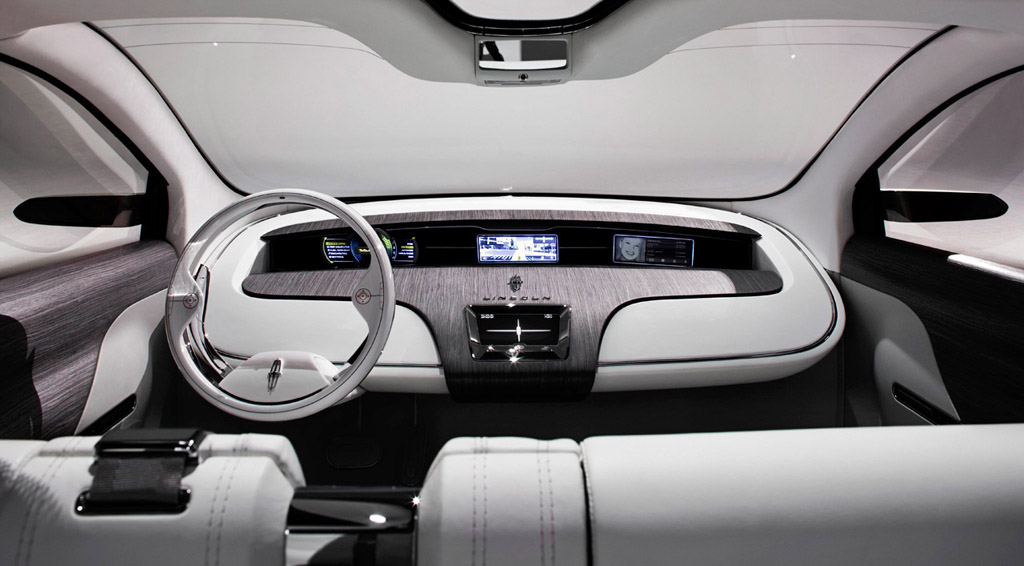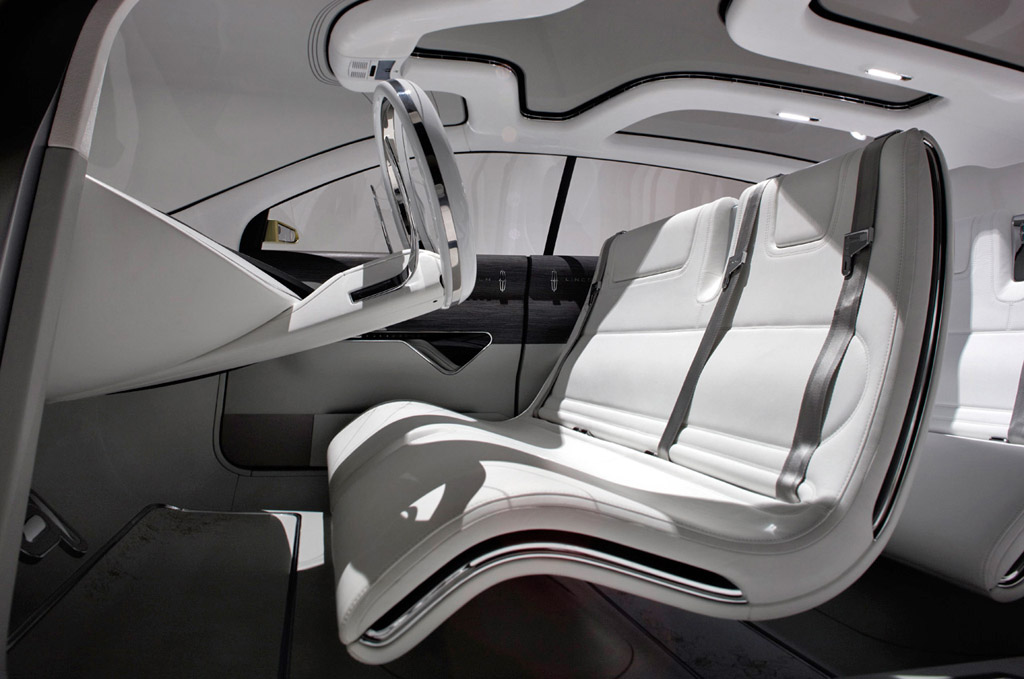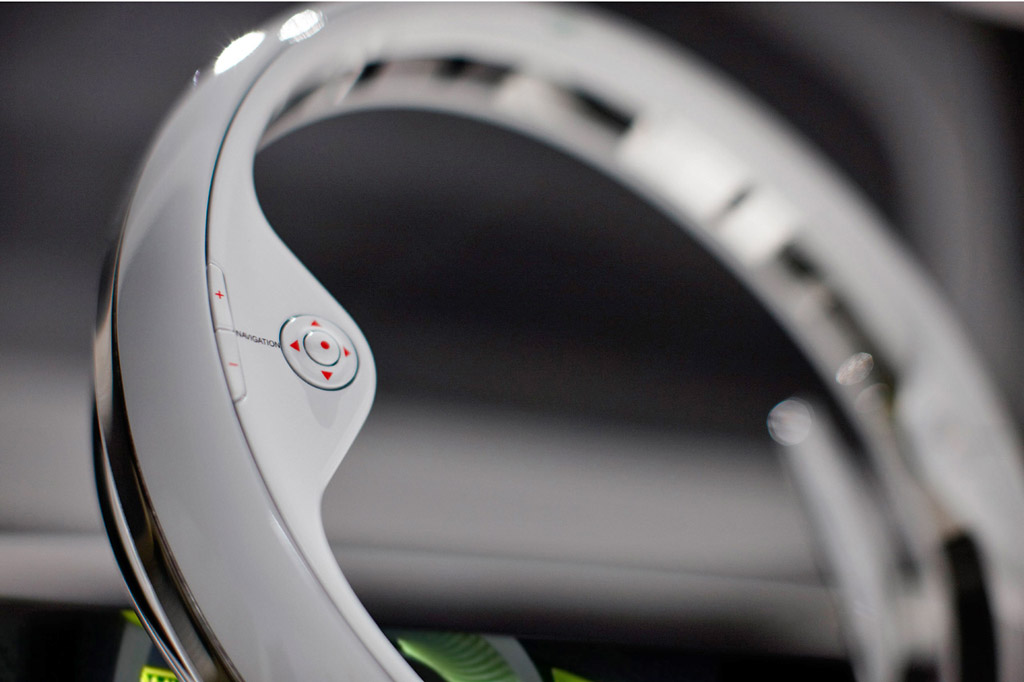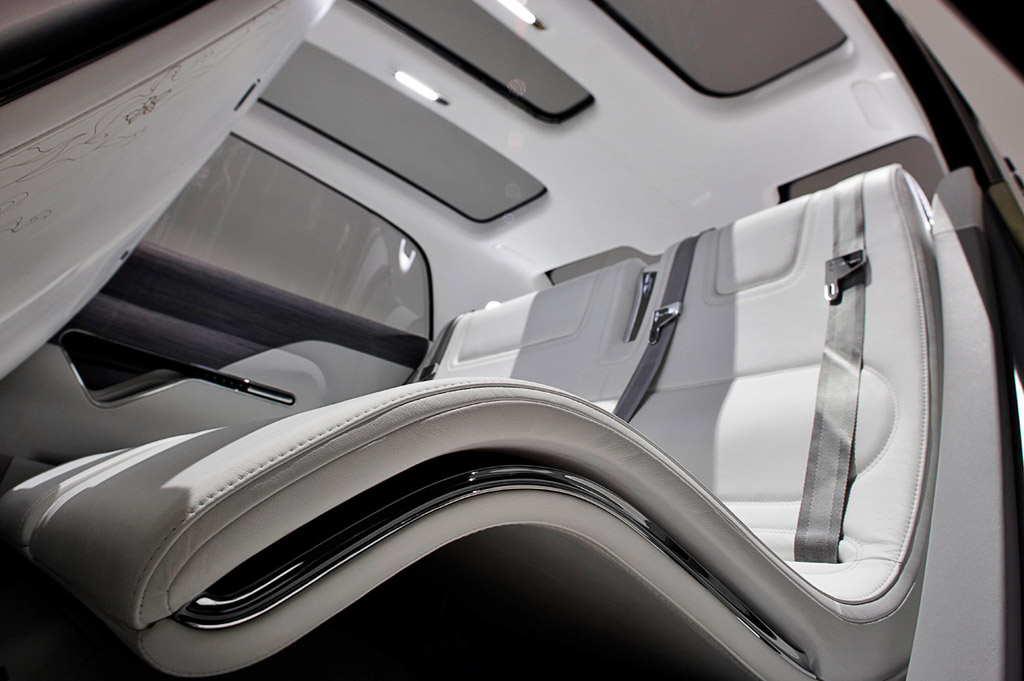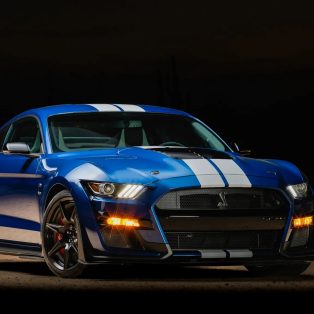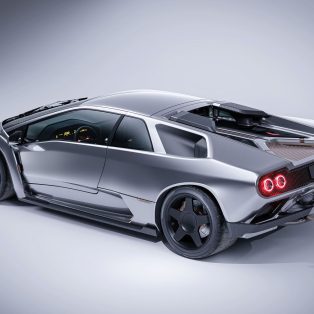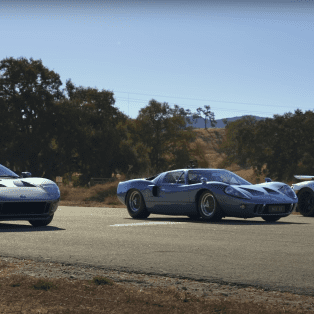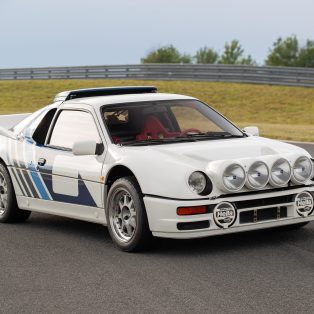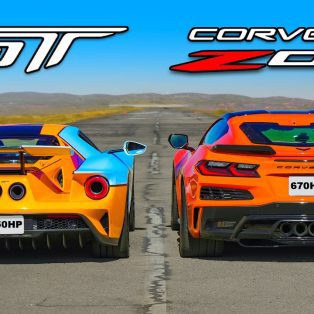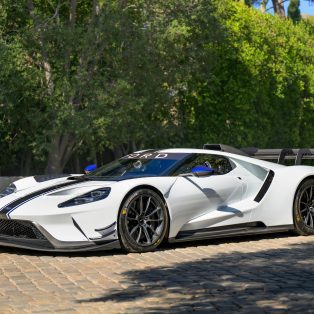2009 Lincoln C Concept
DETROIT, Jan. 12, 2009 – Lincoln is breaking new ground with the Lincoln C concept, a new big idea for a small luxury car.
Designed with today’s upscale, urban consumer in mind, the Lincoln C concept brings the presence and elegance of a large Lincoln to a smaller, more efficient C-sized car.
“Modern luxury buyers who live and work in large, urban areas want to play their part in helping the environment by moving to a smaller vehicle, but they still want to enjoy the luxuries of life,” said Peter Horbury, executive director of Design, The Americas. “The Lincoln C offers sensible indulgence.”
According to Horbury, younger contemporary consumers with slim iPods and pocket-sized cameras have already grown accustomed to the notion of premium quality in a small package.
“During the past decade, people have gotten used to the idea that you could pay more money for a smaller version of the real thing,” said Horbury, citing the evolution of music players from tapes to CDs to MP3 players as an example.
“The same philosophy can be applied to the automobile,” he added. “People will be happy to buy a smaller car that is better for the environment and more maneuverable in the city as long as the vehicle has all the attributes they want.”
The concept’s unique size, lightweight construction and use of sustainable materials make the Lincoln C stand out – along with its fuel economy.
Featuring a 1.6-liter EcoBoost engine and Ford’s all-new dry, dual-clutch PowerShift six-speed transmission, the Lincoln C concept achieves 43 mpg on the highway, while offering up an impressive 180 horsepower and 180 ft.-lbs. of torque. PowerShift and outstanding driving dynamics make the Lincoln C concept fun for the driver.
Plus, a sophisticated human machine interface (HMI) and forward-thinking in-car connectivity technologies bring a whole new dimension to social networking, an important facet of modern customers’ active lifestyles.
“Connectivity is as much a luxury for today’s younger car buyer as are the traditional luxuries of wood, leather and a comfortable ride,” said Horbury. “It means being able to continue your lifestyle seamlessly while you’re on the move.”
Sporty, Elegant Exterior Design
When designers developed the Lincoln C concept, their goal was to create a C-sized automobile with both presence and elegance. Their vision: a smaller, more fuel-efficient car that could maneuver easily in congested urban areas and compact parking spaces, yet still provide driver and passengers with levels of luxury and comfort usually reserved for larger sedans.
“Lincoln C is about efficiency without compromise,” said Freeman Thomas, director of Ford’s Strategic Concepts Group, who led the Lincoln C design team – David Woodhouse, Jeremy Leng, Andrei Markevich and Matt Edwards.
One of the most distinctive features of the Lincoln C is its unique silhouette. The visual mass of the car is very low to the road. A low-slung shoulder line with a wheel-at-each-corner stance supports a dynamic, slightly formal cabin. The aim was “go kart” visual stability combined with elegant lines and surfaces.
At first glance, the silhouette is immediately distinguished by a bold front profile, low shoulder, high beltline, wide C-pillar and compact bustle back.
The modern appearance of the Lincoln C reflects the timeless, iconic elements of the Lincoln DNA: sheer surfaces bounded by defined creases; a cantilevered roof extending from a strong C-pillar; a confident double-wing chrome grille; full-width tail lamps and rocker brightwork.
The front end of the concept is unmistakably Lincoln. The signature grille encapsulates LED headlamps that – like the taillights – are made with prismatic optical elements that create depth and visual sophistication. A sculpted groove in the top of the front hood – which derives its shape from the Lincoln badge – adds a finishing touch to the grille of the car.
A low shoulder line combines with a strong, high belt line to create a sense of safety and privacy inside and outside of the vehicle.
An aluminum cantrail adds elegance to the concept by extending the beltline to the rear glass and breaking up the otherwise tall C-pillar. Aluminum is also visible inside the door apertures.
The Lincoln C is absent of a B-pillar or center post. The center-opening doors – a classic Lincoln trait that rekindles memories of the 1961 Continental – allow effortless access to first- and second-row bench seats and give the vehicle a limousine-like quality.
Sleek side mirrors house both advanced rear-view camera and blind spot detection technologies. Slit-like LED turn signal indicators are integrated into the mirrors, allowing slim, efficient light.
LED taillamps span the full-width of the Lincoln C’s rear, featuring turn signal indicators that fade toward the center of the car stretch from side to side.
An all-glass roof provides a modern, futuristic look. The expansive opening illuminates the cabin and enhances the sense of spaciousness inside the car.
Designers reinterpreted the presentation of the Lincoln badge throughout the exterior of the Lincoln C in a subtle way, giving it a contemporary “race track” theme. The Lincoln star sits proudly at the center of the front end, and the rear badge is slightly morphed to suit its placement above the taillights.
A more in-depth look at various details of the Lincoln C reveals that the badge motif is repeated in discreet ways in the design of the front lower intake mesh; the shape of the glass roof and structure; the implied illuminated keyholes on the door handles; the shape of the rear-view camera that sits on the back of the roof; the design of the wheels and the pattern in the tire treads.
The exterior of the Lincoln C is bathed in a light, exterior clear coat that hints of yellow metallic.
Modern, Timeless Interior Design
Inside, the Lincoln C concept welcomes driver and passengers to a space that looks more like the living room of a contemporary urban loft than the inside of a car.
Elements of classic Lincoln DNA permeate the cabin, including: a bright, clean, light color palette; authentic materials such as wood and metal; ambient lighting; jewel-like chrome details; bench seating; and the symmetrical design of the instrument panel, which thoughtfully serves both driver and passengers.
The interior’s all-white color palette — from roof to seats to floor — is stunning. Subtle chrome accents on the seats, instrument panel, door panels and floor glimmer like fine jewelry. A light gray wood veneer – made from recycled wood – provides a striking contrast against the white leather on the instrument panel and door panels. The headliner is white Alcantara suede.
Because the Lincoln C concept is two inches wider than conventional C-class vehicles, it offers the roominess of a 1961 Continental at almost half the length. In modern terms, the vehicle has the overall length of a Ford Focus and the overall width of a Lincoln MKZ.
Designers took full advantage of the extra space in the interior of the Lincoln C by incorporating luxurious bench seating in the front and back rows. They are crafted from luxurious, chromium-free leather and filled with soy foam. The seats are thin and lightweight, but because they were designed to an ergonomic comfort curve, they are extremely comfortable.
There is a single headrest on the left and a double headrest on the right for passengers in both rows. All the headrests automatically retract without occupants for optimized driver vision. Convenience trays are housed compactly behind the front bench. In the closed position, they are flush with the leather and feature chrome release handles.
One of the most eye-catching elements of the seating is the laser-engraved floral etching on the passenger side seats and floor and on the back of the driver’s seat. It is a light, airy pattern that gives the interior a refined, sophisticated look.
Because of their unique shape and the imperceptible way that they are mounted to the floor, the benches appear to be floating inside the cabin.
The steering wheel and instrument panel also seem to be suspended in air. All of these elements combine to enhance the concept’s futuristic look, openness, and give the impression of dynamic space within the vehicle.
The steering wheel is hubless, lending the driver an unobstructed view of the instrument panel. The glossy white rim rotates around a stationary chrome ring with chrome shifter paddles on both sides. Simple toggles embedded into the left and right sides of the wheel control the vehicle’s navigation system and menu selection.
The instrument panel is leather-wrapped with a chrome bezel. The light, gray wood veneer forms a symmetrical shape that surrounds the center-mounted touch screen and extends out to the right and left sides. Above the center screen is the Lincoln nomenclature and badge, finished tastefully in chrome.
The panoramic instrument panel is divided into three sections and designed with a mixture of digital and analog components. The left side contains Lincoln’s signature HMI menus and driver-related information. The center portion displays a multi-functional screen displaying navigation, SYNC details and a life-like custom avatar to help make everyday journeys more seamless and other helpful, driver-oriented options.
Soft, white ambient lighting creates a relaxing atmosphere inside the cabin. The lighting is integrated into the C-pillar with a front face that displays the Lincoln badge.
The roof also features an integrated rearview mirror and a chrome-trimmed Web camera that rotates to the right or left, depending on whether the driver or the passenger is communicating via the Internet. A chrome air vent follows the shape of the glass roof.
“While the most luxurious and indulgent products often come in the smallest packages, unfortunately this hasn’t been true of most small cars recently,” said J Mays, Ford’s group vice president of Design. “With the Lincoln C, we’ve remixed the traditional small car formula, taking the most engaging technologies and wrapping them in a design fit for today’s urban luxury customer – without sacrificing style or substance.”
# # #
LINCOLN C PAIRS ECOBOOST I-4 WITH DUAL-CLUTCH POWERSHIFT TRANSMISSION FOR 40-PLUS MPG
LINCOLN C PAIRS ECOBOOST I-4 WITH DUAL-CLUTCH POWERSHIFT TRANSMISSION FOR 40-PLUS MPG
DETROIT, Jan. 12, 2009 – The Lincoln C concept showcases Ford Motor Company’s newest combination of fuel-efficient powertrain innovations: a four-cylinder EcoBoost engine mated to a dual-clutch PowerShift transmission.
Featuring a 1.6-liter EcoBoost engine and Ford’s all-new dry, dual-clutch PowerShift six-speed transmission, Lincoln C achieves a projected 43 mpg on the highway, while offering up an estimated 180 horsepower and 180 ft.-lbs. of torque. That’s a nearly 25 percent fuel-economy improvement over Lincoln C’s fuel-sipping C-car cousin, the Ford Focus, which currently delivers unsurpassed highway fuel economy in its segment when equipped with a 2.0-liter naturally aspirated engine.
“Lincoln C demonstrates that a higher degree of engine downsizing as the key to fuel economy improvement, paired with the right technologies, can deliver optimum horsepower, torque and drive-away capability,” said Andreas Schamel, a chief engine engineer with Ford’s Powertrain Research Laboratory. “Plus, when combined with the PowerShift six-speed transmission, the impossible equation becomes perfectly possible: lower fuel consumption, increased power and smoother, more fun-to-drive performance.”
The 1.6-Liter EcoBoost Engine
The Lincoln C concept’s 1.6-liter engine dimensions the common attributes of Ford’s EcoBoost strategy, leveraging a combination of direct fuel injection technology and turbocharging to deliver significantly improved fuel economy and torque versus a larger displacement engine, while reducing emissions up to 15 percent.
The 1.6-liter EcoBoost engine features turbocharging and a central-injector direct injection system. Using a central injector instead of a side-injector system provides improved fuel-air mixture preparation, helping to further reduce fuel consumption and lower emissions. A central injector-based system also provides the most flexible foundation for future fuel-saving technologies.
“We know that a central injection system is a prerequisite for future global fuel economy upgrades such as stratified lean operation, homogeneous charge compression ignition or HCCI, and premium injection system technology if the market demands,” said Martin Wirth, a Ford Direct Injection Gasoline Systems and Combustion technical specialist. “It’s a value solution that gives us the ability to answer market trends quickly and provide broad market coverage, a key component of the EcoBoost strategy to deliver an affordable, fuel-efficient engine technology at high volumes.”
When compared to a standard 2.0-liter naturally aspirated engine, the 1.6-liter EcoBoost engine can deliver up to a 10-percent gain in fuel economy simply on the merits of the engine downsizing and boosting as well as common powertrain systems such as twin independent variable camshaft timing (TI-VCT).
TI-VCT varies the phase of the intake and exhaust cams independently for improved airflow through the engine, which delivers more torque while reducing average fuel consumption by up to 5 percent. “TI-VCT gives us better low-end torque and drive-away capabilities even under the stronger engine downsizing conditions,” said Wirth.
The 1.6-liter EcoBoost engine also features other sophisticated fuel-saving powertrain technologies such as Assisted Direct Start, which contributes to an additional 3 percent gain in fuel efficiency.
Assisted Direct Start automatically shuts down the engine when the vehicle is at idle – at a stop light, for example – and automatically restarts the engine when the brake is released or gas pedal is engaged, improving fuel economy by saving idle fuel consumption.
When a vehicle comes to a stop, the electronic control unit immediately synchronizes the engine’s systems for restart. Once the brake pedal is released or the gas pedal is engaged, a short starter engagement triggers the direct fuel injection system to fill the cylinders with fuel, initiate combustion and start the engine, producing the no-hesitation vehicle launch. An advanced battery management system converts braking energy into electricity and stores it to keep electrical systems operating while the engine is not running.
This advanced system provides consistent start behavior of the stopped or stopping engine that is smooth, quiet and seamless to the customer, requiring no changes in driver behavior.
Powershift Transmission
The Lincoln C concept also features Ford’s dual-clutch PowerShift six-speed transmission, which delivers the efficiency of a manual with the ease of operation of a premium automatic transmission.
Compared to traditional automatic four-speed transmissions, PowerShift can help reduce fuel consumption by up to 9 percent depending on the application. PowerShift, for example, contributes to an estimated 8 percent uptick in Lincoln C’s fuel efficiency when compared to the current Focus.
“The Lincoln C application of PowerShift helps illustrate the competitive advantage this transmission will offer to Ford in the global small car markets,” said Jack Dorigo, North America Powertrain Planning manager. “It’s a new-to-segment technology that’s an improvement over today’s automatic transmissions in terms of fuel economy while providing customers a more connected feel between the pedal and the vehicle’s acceleration.”
PowerShift provides the full comfort of an automatic with a more sophisticated driving dynamic, thanks to uninterrupted torque from the dual-clutch technology, which consists essentially of two manual transmissions working in parallel, each with its own independent clutch unit. One clutch carries the uneven gears – 1, 3 and 5 – while the other the even gears – 2, 4 and 6. Subsequent gear changes are coordinated between both clutches as they engage and disengage for a seamless delivery of torque to the wheels.
The lean curb weight of the Lincoln C enables a dry-clutch derivative of Ford’s PowerShift transmission for added efficiency and durability. A dry clutch transmits power and torque through manual transmission clutch facings, while most automatic transmissions utilize wet clutch plates submerged in oil. As a result, the dry-clutch PowerShift transmission does not require an oil pump or torque converter, providing superior mechanical efficiency.
“A dry clutch is a real sweet spot for lighter vehicle applications like the Lincoln C concept,” said Piero Aversa, manager, Ford Automatic Transmission Engineering. “It is perfectly matched to this vehicle and engine. PowerShift is more efficient, it saves weight, is more durable, more efficient and the unit is sealed for life, requiring no regular maintenance.”
Lincoln C weighs in at 2,750 lbs. due to a number of light-weighting measures, including the transmission. PowerShift, unlike conventional automatic transmissions, does not need the pound-adding torque converter or planetary gears. In addition, the dry-clutch derivative eliminates the need for the weighty pumps, hydraulic fluids, cooling lines and external coolers that wet clutch transmissions require. As a result, the dry-clutch PowerShift transmission showcased on the Lincoln C is nearly 30 pounds lighter than the four-speed automatic transmission featured on today’s Focus.
Differentiating PowerShift even further in terms of its customer appeal is its shift quality, launch feel and overall drive dynamic, which are all facilitated by an expert blend of Ford-exclusive electro-mechanical systems, software features, calibrations and controls. These unique driving features include:
• Neutral coast down – The clutches will disengage when the brakes are applied, improving coasting downshifts and clutch robustness as well as reducing parasitic losses for increased fuel economy.
• Precise clutch control in the form of a clutch slip to provide torsional damping of the engine vibration – This function improves noise, vibration and harshness (NVH) at low engine speeds and enables lower lugging limits for improved fuel economy.
• Low-speed driving or creep mode with integrated brake pressure – This function simulates the low-speed control drivers are accustomed to from an automatic transmission. T he amount of rolling torque in Drive and Reverse is precisely controlled, gradually building as brake pressure is released.
• Hill mode or launch assist – Prevents a vehicle from rolling back on a grade by maintaining brake pressure until the engine delivers enough torque to move the vehicle up the hill, providing improved driver confidence, comfort, safety and clutch robustness.





